One great way to learn about and celebrate other cultures is through food. AtoZ World food is a free online resource that helps you explore national cuisine, classic dishes, recipes and more for dozens of countries!
This piece features Asian countries in honor of Asian American and Pacific Islander Heritage Month.
Find resources to help you learn more about Asian American and Pacific Island heritage HERE.
Find AtoZ World Food at www.tulsalibrary.org/databases. Log in with your last name and TCCL card, then select the country from the list or search for the name of the dish.
Fijian cuisine: The diet of Fiji’s indigenous Polynesian and Melanesian peoples is traditionally built around seafood as well as starchy, high-carbohydrate fruits and vegetables such as cassava, yams, breadfruit, taro root, bananas, and mangoes. In Fiji’s rural areas, ancient foodways are still carried on largely unchanged. Recipes are relatively simple, and foods are not highly seasoned; many common dishes are flavored with just onion and coconut milk. In the multiethnic urbanized areas of the island chain, cuisine takes on a more Pan-Asian character.
Classic dishes from Fiji include: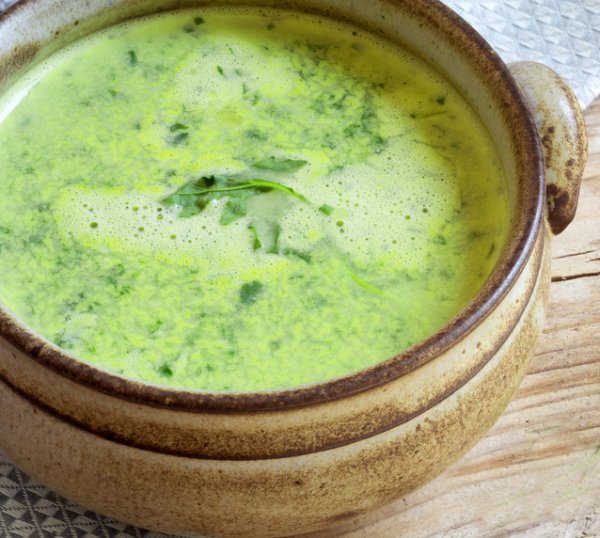
- Rourou Soup – Rourou is the Fijian name for taro leaf, a common vegetable on the islands. Taro leaf soup is usually a simple preparation seasoned with onion and perhaps enriched with milk or coconut cream. When served as a main dish, rourou soup usually contains fish or meat and some taro or cassava root.
- Kokoda – Cubed fish marinated in lemon or lime juice, then garnished with onions, chilies, shallots, and other vegetables. The dish is then dressed with a thick coconut cream and usually served chilled.
- Green Pawpaw Salad – Most Fijian salads are made from either fruit, fish, or both. Green pawpaw (papaya) salad is particularly common, and its simple coconut oil dressing is typical of Fijian salads.
- Cassava Cake – This unleavened cake is normally served for afternoon tea or at breakfast time. It is made almost entirely from grated cassava.
Papua New Guinea cuisine: The traditional cuisine of Papua New Guinea is based on native ingredients. Sago (starch from the sago palm) is a staple, along with cassava and sweet potato. These three items form the basis for most daily foods. The majority of food is vegetarian, although chicken and pork are enjoyed as well, mainly on special occasions. Most foods derive from either naturally available ingredients or those cultivated in home gardens.
Classic dishes from Papua New Guinea include:
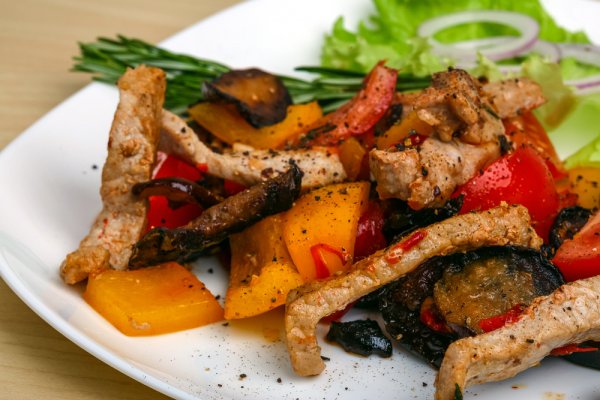 Saksak: Sago, known as saksak in the Tok Pisin language of Papua New Guinea, is a staple of the Papua New Guinean diet. Sago is the starch that is extracted from the wood pulp of certain types of palm trees and is produced commercially in the form of "pearls," which look similar to tapioca pearls and are often used interchangeably in recipes.
Saksak: Sago, known as saksak in the Tok Pisin language of Papua New Guinea, is a staple of the Papua New Guinean diet. Sago is the starch that is extracted from the wood pulp of certain types of palm trees and is produced commercially in the form of "pearls," which look similar to tapioca pearls and are often used interchangeably in recipes.- Kaima Bona Gatoi: Kaima bona gatoi is a savory dish served with grilled meat or fish. It is a sweet potato and eggplant casserole flavored with chili and coriander that is grilled until crisp on the outside. With its simple recipe and use of locally-available ingredients, kaima bona gatoi is popular everyday fare in Papua New Guinea.
- Talautu – Pineapple in coconut cream is a popular dessert. Modern recipes generally call for a dairy milk and cornstarch custard, but the traditional recipe just contains fruit.
Indonesian cuisine: Indonesian cuisine is as diverse as the cultures of the many people who inhabit its 6,000 islands. Curry and rice dishes predominate, but they vary widely according to local culinary traditions. The nation's gastronomy shows the influences of its Asian neighbors (especially Malaysia and China) as well as its many historic trading partners from India and the Middle East to the Netherlands and Portugal.
Classic dishes from Indonesia include: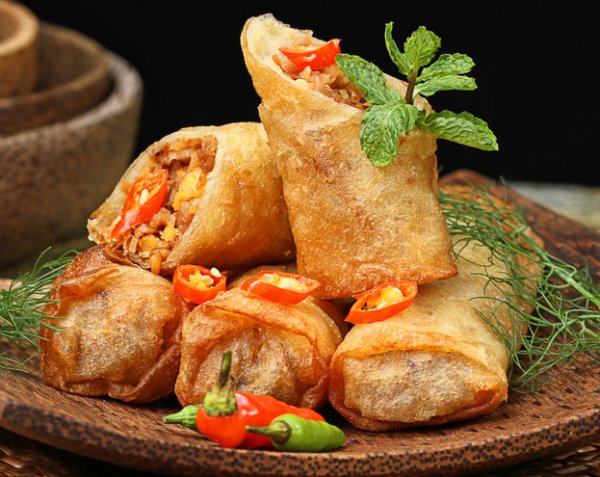
- Lumpia Semarang – Pastries stuffed with meat or vegetables (similar to spring rolls) that are popular throughout the Philippines and Indonesia.
- Satay – A popular dish consisting of chunks or slices of meat (chicken, goat, mutton, beef, pork, fish) threaded on bamboo skewers and grilled.
- Bakso – This popular meatball soup is sold from street stalls and push carts in the late afternoon and evening.
- Gado Gado Salad – This very popular vegetable and egg salad with peanut dressing is served throughout Indonesia and has many regional variations.
Korean cuisine: Korean cuisine shows some similarities to Japanese and Chinese cooking, but the overall flavor of Korean dishes is generally stronger. Many dishes are prepared simply with few ingredients. As is to be expected on a peninsula, fish and seafood are the most popular sources of protein. Fish is eaten in soups, in stews, grilled, stir-fried, and raw. Beef, pork, and chicken are also commonly consumed, though often in relatively small quantities in soups.
Classic dishes from Korea include: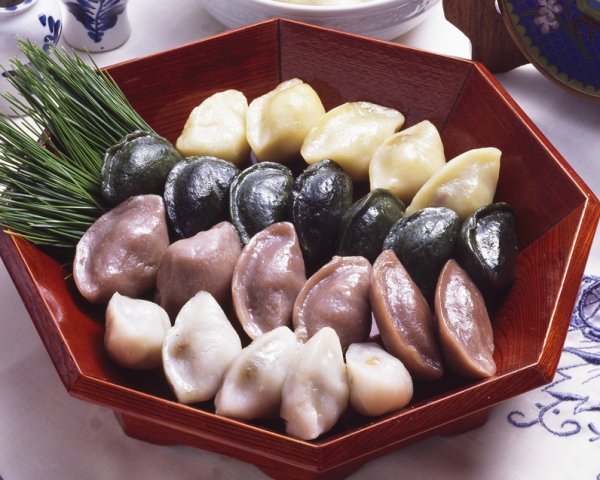
- Gogi Wanja Jeon – Fried meat balls made of bean curd, pork, scallion, and garlic are normally cooked without a sauce, but may be served with condiments.
- Musangchae – White radish salad is a cold dish flavored with chili, sugar, and vinegar. Typically, much care is taken to balance these flavors. This is served as a small salad alongside more substantial dishes.
- Bulgogi – One of Korea’s best-known dishes and the national dish, bulgogi is seasoned beef grilled or quickly cooked in a skillet. It is normally served with rice and other foods.
- Songpyeon – A sweet, filled rice cake served on Chuseok, a festival of thanksgiving.
Ukrainian cuisine: Ukrainian food is based on the simple peasant dishes that have sustained the country’s farmers for thousands of years. Cultivating a wide variety of grains from the country’s fertile soil, generations of Ukrainians have built a way of life around agriculture, making their country the “breadbasket of Europe.” Ukrainian cuisine exemplifies eastern European food, where bread, potatoes, and meat are common staples.
Classic dishes from Ukraine include:
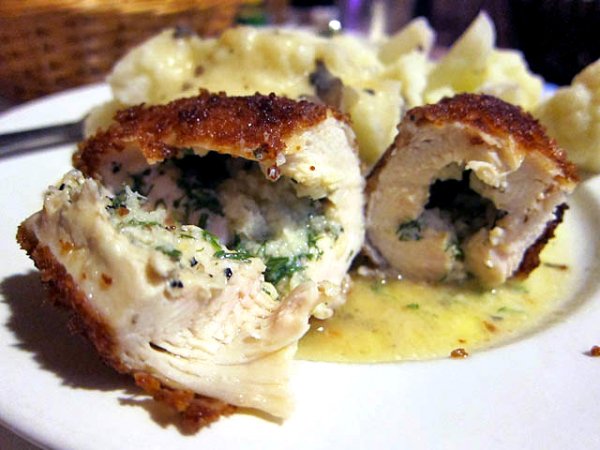 Varenyky (Dumplings) – Semi-circular dumplings filled with potato, cheese, or onions or some combination thereof are a very common Ukrainian dish. These may be served as an appetizer, a side dish, or even a main course.
Varenyky (Dumplings) – Semi-circular dumplings filled with potato, cheese, or onions or some combination thereof are a very common Ukrainian dish. These may be served as an appetizer, a side dish, or even a main course.- Borscht – A beet-based soup common throughout Eastern Europe. The Ukrainian version generally includes meat and is served hot.
- Kotlety Po-Kyivskomy (Chicken Kiev) – Known outside Ukraine as Chicken Kiev, this dish is made of chicken breast rolled around seasoned butter and deep fried.
- Deruny (Potato Pancakes) – Potato pancakes, usually served with sour cream, are a popular Ukrainian side dish. Grated potatoes, seasoned with a little onion, are fried until golden.
Indian cuisine: Indian cuisine varies widely by region and religion; although the spicy stews known as curries that originated in India remain a cornerstone of its cuisine. Northern Indians eat their curries with baked flatbreads (roti or naan), while those in Southern India and Bengal prefer rice and fried breads (paratha, chapati, dosa, appam, and puri).
Classic dishes from India include: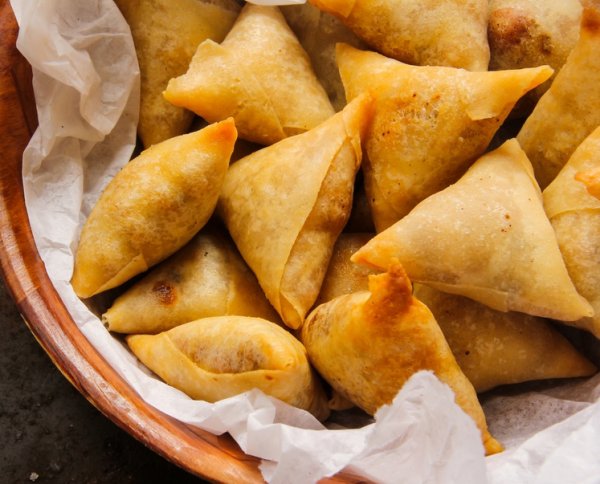
- Pakora – A common Indian snack of vegetables (onions, potatoes, eggplant, cauliflower, spinach, chilies) dipped in chickpea batter and deep-fried.
- Samosas – Savory fried turnovers with various fillings (potatoes, peas, lentils) traditionally served with tamarind or coriander chutney, but nowadays more commonly served with ketchup.
- Chicken Biryani – A dish made with chicken marinated in spices and yogurt that is cooked with basmati rice.
- Sambar – A lentil soup served alongside many dishes.
- Barfi – Present at any special occasion, barfi are small brick-shaped sweets made from reduced milk. North Indian versions are lighter in color and sweeter than their South Indian cousins, which use more ginger and cinnamon.
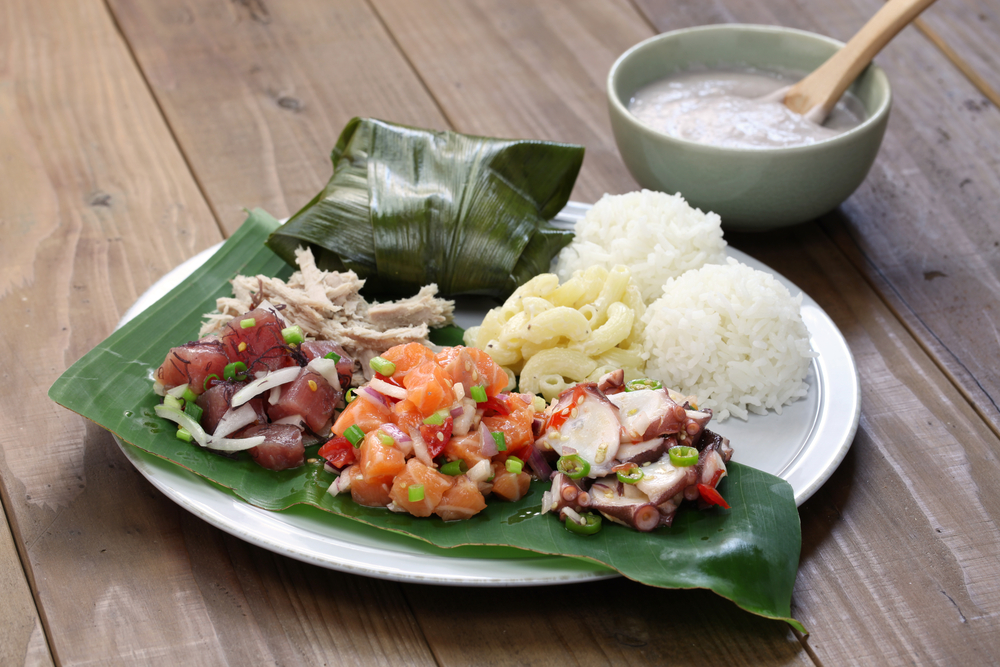 Check out this traditional dish from Hawaii called lau lau:
Check out this traditional dish from Hawaii called lau lau:
- Lau lau, translated as "leaf leaf," refers to a traditional cooking method native to Hawaii as well as the dish. It combines chunks of fatty meat with a piece of salted fish wrapped in taro leaves, tied in a ti leaf packet, and steamed in an imu, or underground oven. It also can be prepared in a pressure cooker, rice cooker, or baked in a conventional oven. Pork is most commonly used along with butterfish also known as cod.
Afghani cuisine: Most Afghan meals are served family-style on a dastarkhan, a Turkic word meaning “tablecloth.” Spread on the floor or a table then arranged with dishes, diners sit around the dastarkhan cross-legged on cushions. In place of utensils, the leavened, oven-baked flatbread naan is used to scoop up bites of food using the right hand.
Classic dishes from Afghanistan include: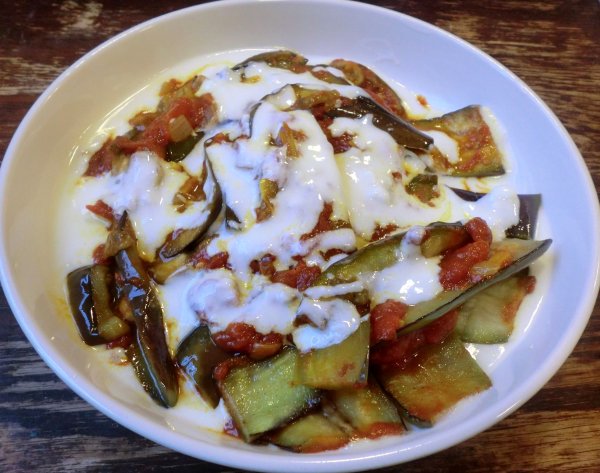
- Bulani Katchalu – An Afghan appetizer similar to the Mexican quesadilla.
- Shorwa – A beef, potato, onion, carrot, celery, and egg soup. Can also be made with lamb.
- Kofta – Skewered and grilled lamb or beef patties.
- Burani Banjaan – An eggplant dish with tomato sauce and yogurt.
- Charoset – A fruit and nut paste of almonds, walnuts, raisins, apples, and bananas.
Explore Asian countries and Pacific Islands with CultureGrams
CultureGrams World Edition offers an expansive way to explore countries worldwide. Access it at www.tulsalibrary.org/databases, then log in with your last name and TCCL card. From the homepage, click World Wide then select Asia from the map or list. From there, click a country name to explore it.
Use CultureGrams to learn about the geography, history and population of Hawaii and explore fun facts, maps, cultural notes, recipes and more. To explore other Pacific Islands, select World Edition from the homepage then click on Oceania from the map or list. Pacific Islands include Papua New Guinea, Fiji, Polynesia, Samoa and more.